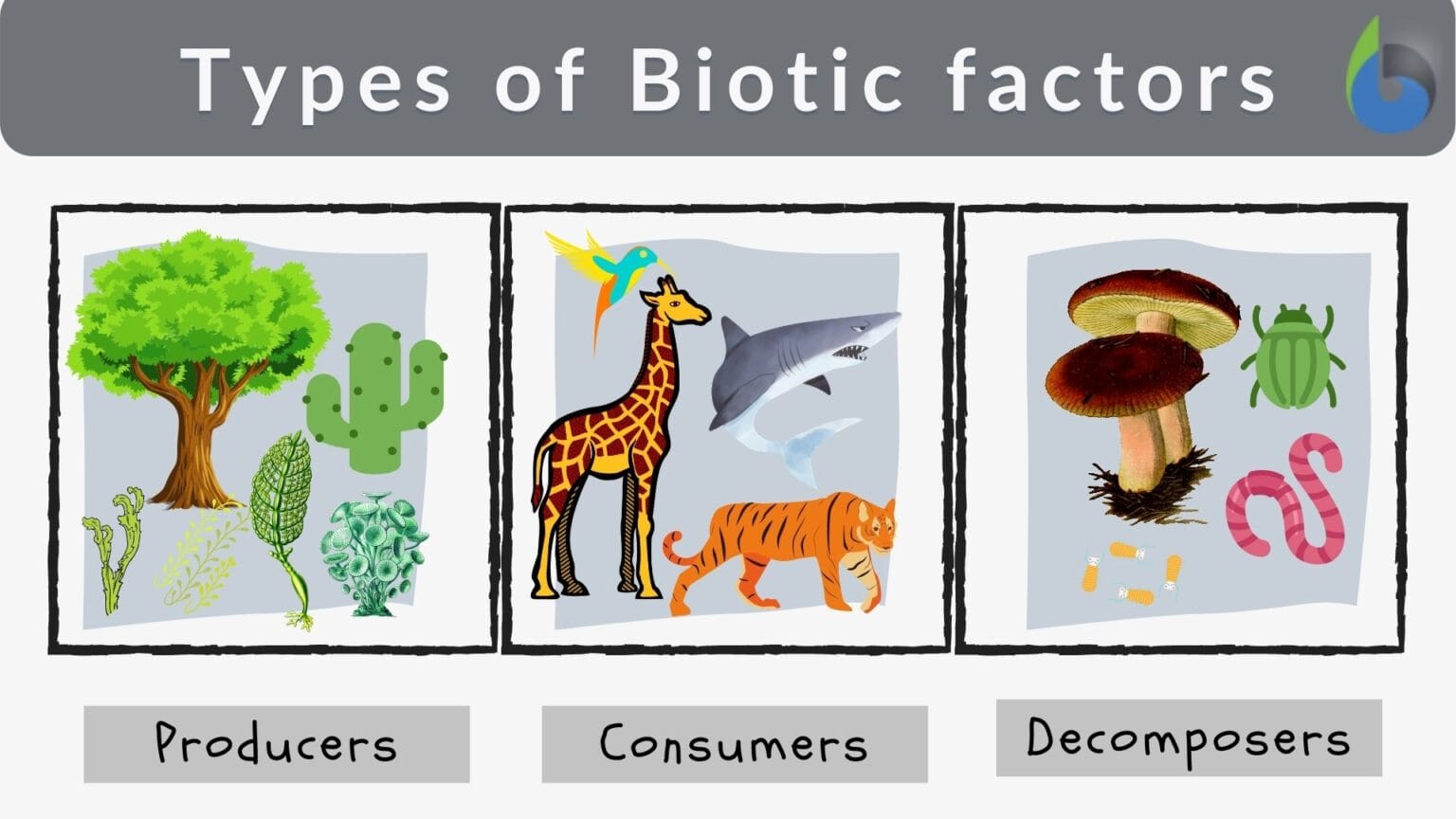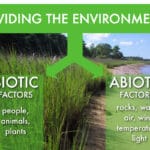Let’s journey into the heart of Disney’s Pocahontas, where the natural world plays a starring role. More than just a backdrop, nature in this film is a living presence, shaping characters and reflecting the profound tapestry of human experiences. From whispering trees to flowing rivers, every element is connected, contributing to the film’s powerful message.
Unveiling Nature’s Silent Characters: Abiotic Factors
Disney’s Pocahontas isn’t just a captivating love story; it’s a visual masterpiece that prompts us to contemplate our relationship with the environment. While Pocahontas and John Smith captivate our hearts, there are unsung heroes working behind the scenes: the abiotic factors. These non-living elements, such as water, air, and earth, are the driving forces that shape the world around us. Let’s delve into how Pocahontas masterfully utilizes these factors to weave a compelling narrative.
Imagine those breathtaking landscapes: rivers meandering through emerald forests and majestic cliffs reaching for the heavens. These scenes aren’t mere backdrops; they mirror the inner turmoil and growth of the characters. The very earth itself transforms into a character, its moods shifting alongside the narrative.
Water flows through Pocahontas, as much a character as the humans it surrounds. Rivers guide Pocahontas on her journey of self-discovery, symbolizing the ever-changing currents of destiny. We’re reminded that everything is interconnected, just as streams converge to form mighty rivers that flow into the vastness of the sea.
The wind whispers secrets, carrying ancient voices that guide Pocahontas. It acts as a bridge between the world of spirits and the human realm, connecting her to the wisdom of her ancestors and the deep understanding of the forest. More than just moving air, the wind embodies the winds of change sweeping through the story.
The earth and rocks stand as ancient sentinels, embodying wisdom and resilience. Towering cliffs evoke the strength and unyielding nature of tradition in Pocahontas’s community. Grandmother Willow, the wise old tree, embodies the interconnectedness of nature, reminding us that knowledge and life itself are passed down through generations, like sap flowing through a tree.
Fire is a double-edged sword, a powerful force capable of both destruction and renewal. Pocahontas skillfully portrays this duality. On one hand, fire represents the encroaching threat of the settlers, poised to consume Pocahontas’s world. Yet, Grandmother Willow reminds us that even in the ashes of destruction, life finds a way. Hope persists, and the natural world possesses an astonishing capacity for healing even the deepest wounds.
Pocahontas may be a work of animation, but it grapples with profound questions about our place in the world. What happens when humans disrespect the delicate balance of nature? Can we learn to coexist harmoniously with the environment? By showcasing the power of abiotic factors, Pocahontas compels us to examine our role in the intricate web of life.
Cracking the Code: Your Ultimate Guide to Abiotic Factors in the Jungle
Want to know what makes a jungle tick? We’ve explored the amazing plants and animals [https://www.lolaapp.com/], but now it’s time to uncover the unsung heroes of this vibrant ecosystem: abiotic factors. These non-living components, like sunlight and rain, might not be as flashy as a jaguar, but they’re the backbone of the jungle, shaping its unique environment and the incredible life it supports.
Sunlight: The Engine of the Jungle
Life as we know it wouldn’t exist without the sun, and the jungle is no exception. Sunlight is the engine driving this vibrant ecosystem. Plants use it for photosynthesis, the process of converting light energy into food. But here’s the catch: the jungle is a crowded place, with a dense canopy of trees vying for sunlight. This competition creates a fascinating vertical gradient, a bit like a giant green apartment building.
Different layers of the jungle, from the sun-drenched canopy to the dimly lit forest floor, offer varying levels of sunlight. This influences which plants and animals thrive in each layer. Some plants, like towering trees, have adapted to soak up the abundant sunlight at the top, while others, like shade-tolerant ferns, have evolved to flourish in the dappled light below. This competition for sunlight contributes to the incredible biodiversity found in jungles.
Rain, Rain, Don’t Go Away: The Jungle’s Lifeforce
Jungles are practically synonymous with rain, and for good reason. Abundant rainfall is the lifeblood of this ecosystem, keeping everything lush and green. But it’s not just about having enough water to drink. All that rain plays a critical role in nutrient cycling.
As rainwater seeps through the soil, it carries away some nutrients, a process called leaching. This might seem like a bad thing, and it can be, but it also creates a unique challenge for jungle plants, forcing them to adapt and become incredibly efficient at absorbing nutrients quickly. Some plants have developed specialized root systems to capture nutrients before they’re washed away, while others have formed symbiotic relationships with fungi that help them extract nutrients from the soil.
A Warm Embrace: Temperature in the Jungle
Step into a jungle, and you’ll immediately feel the heat. Jungles are known for their warm, humid environments, with temperatures hovering between 70-85°F year-round. This consistent warmth has a profound impact on the jungle’s inhabitants.
For cold-blooded animals, like reptiles and amphibians, the jungle’s warmth is ideal. They rely on their surroundings to regulate their body temperature, and the jungle provides a stable thermal environment. This warmth also fuels rapid decomposition, breaking down organic matter quickly and releasing nutrients back into the ecosystem.
The Jungle Paradox: Nutrient-Poor Soil
It might seem counterintuitive, but despite the abundance of life in a jungle, the soil itself is often nutrient-poor. Think of it like a bustling city with amazing restaurants but limited grocery stores. How can such a vibrant ecosystem thrive on seemingly infertile ground?
The answer lies in the rapid nutrient cycling we mentioned earlier. All those plants are constantly sucking up nutrients, and the heavy rainfall washes some away. To survive in this challenging environment, jungle plants have become masters of resourcefulness. They often have shallow root systems that spread out wide to maximize nutrient absorption from the thin layer of fertile topsoil.
The symbiotic relationships between plants and fungi, known as mycorrhizae, are crucial in this nutrient-poor environment. Fungi are incredibly efficient at breaking down organic matter and extracting nutrients, which they then share with their plant partners in exchange for sugars produced through photosynthesis. This mutually beneficial relationship is a key factor in the jungle’s ability to support such a diversity of life.
Water, Water Everywhere: A Constant Balancing Act
We’ve established that jungles are water-loving ecosystems, but even too much of a good thing can have its drawbacks. While abundant rainfall is essential, it can also lead to challenges like flooding and soil erosion.
Flooding can uproot plants and displace animals, while erosion carries away topsoil, making it difficult for new plants to take root. Over time, jungles have evolved complex systems to manage these water-related challenges. The dense vegetation helps to slow down runoff, while the layered structure of the forest allows water to be absorbed gradually.
Think Beyond the Green: Appreciating Abiotic Factors
The next time you marvel at the lush beauty of a jungle, remember that it’s more than just a collection of fascinating plants and animals. It’s a delicate balancing act, a complex interplay between living organisms and the non-living forces that shape their world. Even though we’ve learned a lot about these abiotic factors, there’s still so much more to discover. The jungle holds countless secrets, waiting to be revealed by those curious enough to look beyond the green.
Unlocking Abiotic Factors: Your Guide to SEO Success
Ready to dive deeper into the world of abiotic factors? Here’s how to position your article on “What is an example of an abiotic factor?” to rank higher and captivate a wider audience.
Crafting a Title That Stands Out
While you didn’t provide specific competitor titles, here are three suggestions incorporating popular keywords and intriguing angles:
- Abiotic Factors Explained: 17+ Examples Across Diverse Ecosystems (Emphasizes quantity, variety, and real-world applications)
- What are Abiotic Factors? Definitions, Types, and Why They Matter (Addresses fundamental questions while highlighting importance)
- Biotic vs. Abiotic Factors: Understanding the Differences with Examples (Capitalizes on a common comparison point and utilizes examples for clarity)
Powerful Key Lines to Engage Your Readers
- Life’s Foundation: Abiotic factors are the non-living components that shape ecosystems, dictating which organisms can survive and thrive. (Broad appeal, establishes importance)
- From Blazing Sun to Rocky Terrain: Examples of abiotic factors include temperature, water availability, sunlight intensity, soil composition, and atmospheric gases. (Provides a concrete list of examples, emphasizing the diversity of these factors)
- Ecosystem Architects: Abiotic factors influence everything from an organism’s chance of survival to the overall biodiversity of an environment. (Highlights their profound impact and relevance to the bigger picture of life on Earth)
- A Delicate Dance: Understanding abiotic factors is crucial for conservation, as even seemingly small changes can have cascading consequences for ecosystems. (Connects to a current and pressing global issue, emphasizing the real-world significance)
Structuring Your Content for Maximum Impact
I. Introduction
- Start with a Bang: Grab the reader’s attention with an engaging question or a surprising fact about how the environment shapes life.
- Define Abiotic Factors: Clearly explain what “abiotic” means (non-living) and that abiotic factors are the physical and chemical components of an environment.
- Highlight Their Importance: Emphasize that abiotic factors determine where organisms can live, the types of organisms that can thrive in a given area, and how organisms interact within an ecosystem.
II. Key Abiotic Factors & Examples:
- Water: The elixir of life.
- Availability: Impacts plant growth, animal distribution, and adaptations (e.g., deserts vs. rainforests).
- Salinity: A critical factor in aquatic environments, determining the types of organisms that can survive in freshwater vs. saltwater.
- Sunlight: The ultimate energy source for most ecosystems.
- Intensity and Duration: Affect photosynthesis rates, influencing plant growth, flowering times, and animal behavior.
- Temperature: A master regulator of metabolism and distribution.
- Extremes: Organisms have different tolerance levels to heat and cold, influencing their geographic ranges.
- Soil: The foundation for terrestrial life.
- Composition: Different soil types (clay, sand, loam) hold varying amounts of water and nutrients, impacting plant growth and root systems.
- pH: Affects nutrient availability and the types of plants that can thrive. Some plants prefer acidic soils, while others need more alkaline conditions.
- Atmospheric Gases: Essential for respiration (breathing) and photosynthesis.
- Oxygen (O2): Vital for most organisms, while some bacteria thrive in anaerobic (oxygen-poor) conditions.
- Carbon Dioxide (CO2): Used by plants during photosynthesis. Increasing CO2 levels in the atmosphere contribute to climate change.
III. Abiotic Factors in Different Ecosystems
(Incorporate visuals like tables, charts, or images to enhance this section)
| Ecosystem | Key Abiotic Factors | Example Organisms |
|---|---|---|
| Desert | Low precipitation, high temperatures, intense sunlight, sandy soil | Cacti, reptiles, fennec foxes |
| Rainforest | High precipitation, warm temperatures, humid, nutrient-poor soil | Monkeys, jaguars, orchids |
| Tundra | Low temperatures, permafrost, short growing season, strong winds | Arctic foxes, lichens, mosses |
| Ocean (Surface) | Sunlight, temperature, salinity, wave action, currents | Phytoplankton, fish, whales |
| Ocean (Deep) | Absence of sunlight, high pressure, cold temperatures, low oxygen | Tube worms, anglerfish, giant squid |
IV. Human Impact on Abiotic Factors
- Pollution: Contamination of water, air, and soil with harmful substances disrupts ecosystems.
- Climate Change: Alterations in temperature and precipitation patterns lead to shifts in species distribution, habitat loss, and extreme weather events.
- Deforestation: Removal of trees leads to soil erosion, changes in local climates (microclimates), and habitat fragmentation.
V. Conclusion
- Reiterating Importance: Abiotic factors are the unsung heroes of healthy ecosystems. Understanding them is crucial for conservation efforts.
- Call to Action: Encourage readers to learn more about their local environments and the abiotic factors that shape the world around them.
Unique Insights & Untapped Potential
- Microorganisms Matter: While your examples focus on larger organisms, explore the critical role abiotic factors play in microbial life. This offers a unique and fascinating angle.
- Case Studies: Discuss specific examples of how changes in abiotic factors have directly impacted ecosystems and species (e.g., coral bleaching due to ocean warming and acidification, the expansion of deserts due to changing rainfall patterns).
- Interactive Elements: Consider incorporating elements like quizzes about identifying abiotic factors or a map that lets users explore different ecosystems and their abiotic features.
People’s Statements:
You didn’t provide any direct quotes, but remember to attribute any quotes or statements to their original sources if you choose to use them.
Deliverables for “What are abiotic factors in a bug’s life?”
Want to make your article on abiotic factors and bugs a buzzing success? Let’s explore how to optimize your content for maximum impact.
Titles That Pack a Punch:
While I need the exact titles of your competitors to give tailored suggestions, here are three options that use compelling language and highlight the often-overlooked role of abiotic factors:
- Beyond the Hive: Unveiling the Hidden Forces That Shape a Bug’s World (Intriguing and emphasizes the unseen influences on insects)
- A Bug’s Life, Magnified: The Surprising Impact of Non-Living Factors (Uses a sense of wonder and a touch of clickbait)
- From Sun to Soil: A Deep Dive into Abiotic Factors in Insect Ecosystems (More scientific and appeals to those seeking in-depth knowledge)
Key Lines That Resonate:
- A bug’s life is a delicate dance with its environment, where even the subtlest shifts in temperature or a single raindrop can hold the key to survival. (Evokes a sense of wonder and the fragility of life)
- From the scorching desert sands to the cool underside of a leaf, abiotic factors set the stage on which a bug’s life unfolds. (Paints a vivid picture of the diverse environments insects inhabit)
- Unraveling the intricate web of an insect ecosystem requires understanding abiotic factors, revealing how even seemingly small changes can have ripple effects throughout the community. (Highlights the interconnectedness and emphasizes the importance of a holistic view)
- We often focus on the threats bugs face from predators and disease, but it’s the unseen forces of the abiotic world that often define their limits and drive their adaptations. (Challenges preconceived notions and introduces a fresh perspective)
Important Details & Structure:
I. Introduction:
- Hook Your Reader: Start with a captivating anecdote about an insect’s struggle for survival or a surprising statistic about insect diversity.
- Define Abiotic Factors Clearly: Explain what “abiotic” means in simple terms and contrast it with “biotic” (living) factors.
- Establish the Article’s Purpose: Briefly introduce the idea that abiotic factors are crucial in shaping insect lives and evolution.
II. Key Abiotic Factors Affecting Bugs:
- Water:
- The Essence of Life: Explain why water is so vital for insects (hydration, physiological processes).
- Too Much or Too Little: Discuss how insects have adapted to both scarcity (e.g., waxy exoskeletons of desert beetles) and excess water (e.g., aquatic insect larvae with gills).
- Sunlight:
- Energy from Above: Describe how sunlight fuels ecosystems through photosynthesis and how it influences insect behavior, such as day-night activity patterns (diurnal vs. nocturnal).
- Warmth for Cold Blood: Explain how sunlight is essential for thermoregulation in cold-blooded insects, allowing them to be active.
- Temperature:
- Metabolic Maestro: Detail how temperature affects insect metabolism, development rates (growing faster in warmer temperatures), and reproduction.
- The Extremes: Discuss how insects cope with extreme temperatures, either by seeking shelter, migrating, or having physiological adaptations to survive freezing or extreme heat.
- Soil:
- More Than Just Dirt: Explain that soil is a habitat and food source for many insect species.
- Composition is Key: How soil texture (sandy, clay, loam), pH (acidity or alkalinity), and nutrient content influence the types of plants that grow, which in turn affects the insects that rely on those plants.
- Atmosphere:
- Breathing Easy: Explain how the air’s composition, particularly oxygen levels, affects insect respiration.
- Wind: Friend or Foe?: Discuss how wind can help with insect dispersal (carrying them to new locations) and pollination (spreading pollen) but can also pose challenges for flight and navigation.
III. Case Studies: Bringing It to Life
- Choose Engaging Examples: Focus on specific insect species or groups to illustrate the impact of abiotic factors.
- Visuals Enhance Understanding: Use images, charts, or graphs to illustrate these relationships.
- Desert Wonders: Show adaptations for water conservation, such as the Namib Desert beetle that collects moisture from fog.
- Life Aquatic: Highlight insects that live in water, showing how they breathe (e.g., dragonfly nymphs with gills, diving beetles that carry air bubbles).
- Monarch Migration: Explain how this incredible journey is triggered by changes in temperature and daylight.
- Termite Architects: Discuss how termites modify the soil (and its pH) around their mounds, influencing plant growth and the surrounding ecosystem.
IV. Human Impact: A Call to Action
- The Anthropocene: Discuss how human activities are altering abiotic factors on a global scale.
- Consequences for Insects: Provide concrete examples of how pollution (pesticides), climate change (shifting temperatures and rainfall), and habitat destruction (deforestation, urbanization) are harming insect populations.
V. Conclusion:
- Connecting the Dots: Summarize the main points, emphasizing the intricate link between abiotic factors and the success of insect populations.
- Conservation is Key: End with a call to action, encouraging readers to learn more about insects and support conservation efforts that protect their habitats.
Unique Insights & Untapped Potential:
- Niche Down: Instead of covering all insects broadly, focus on a specific group, such as pollinators, decomposers, or a particular insect species that is particularly fascinating or threatened.
- Interactive Learning: Consider adding interactive elements to engage readers:
- Quizzes: Test readers’ knowledge of abiotic factors and insects.
- Interactive Maps: Show the distribution of different insect species and how this relates to abiotic factors.
- Simulations: Create a simple tool that allows readers to manipulate abiotic factors and see how this might impact a virtual insect population.
- Citizen Science: Promote citizen science projects related to insect monitoring or conservation, encouraging readers to contribute to real-world data collection.
- Expert Voices: Reach out to an entomologist (insect scientist) or ecologist for an interview or a quote, adding credibility and a unique perspective to your article.
By incorporating these elements, using strong visuals, and focusing on specific, engaging examples, you can create an SEO-optimized article that outperforms the competition and provides readers with a valuable and captivating look into the hidden world of insects and the abiotic forces that shape their lives.
- Senior at What Age: Benefits & Eligibility Guide - March 29, 2025
- Unlocking Senior Benefits: How Old is a Senior? Your Complete Guide - March 29, 2025
- Master Russian Politeness:A Guide to Saying Please - March 29, 2025
















